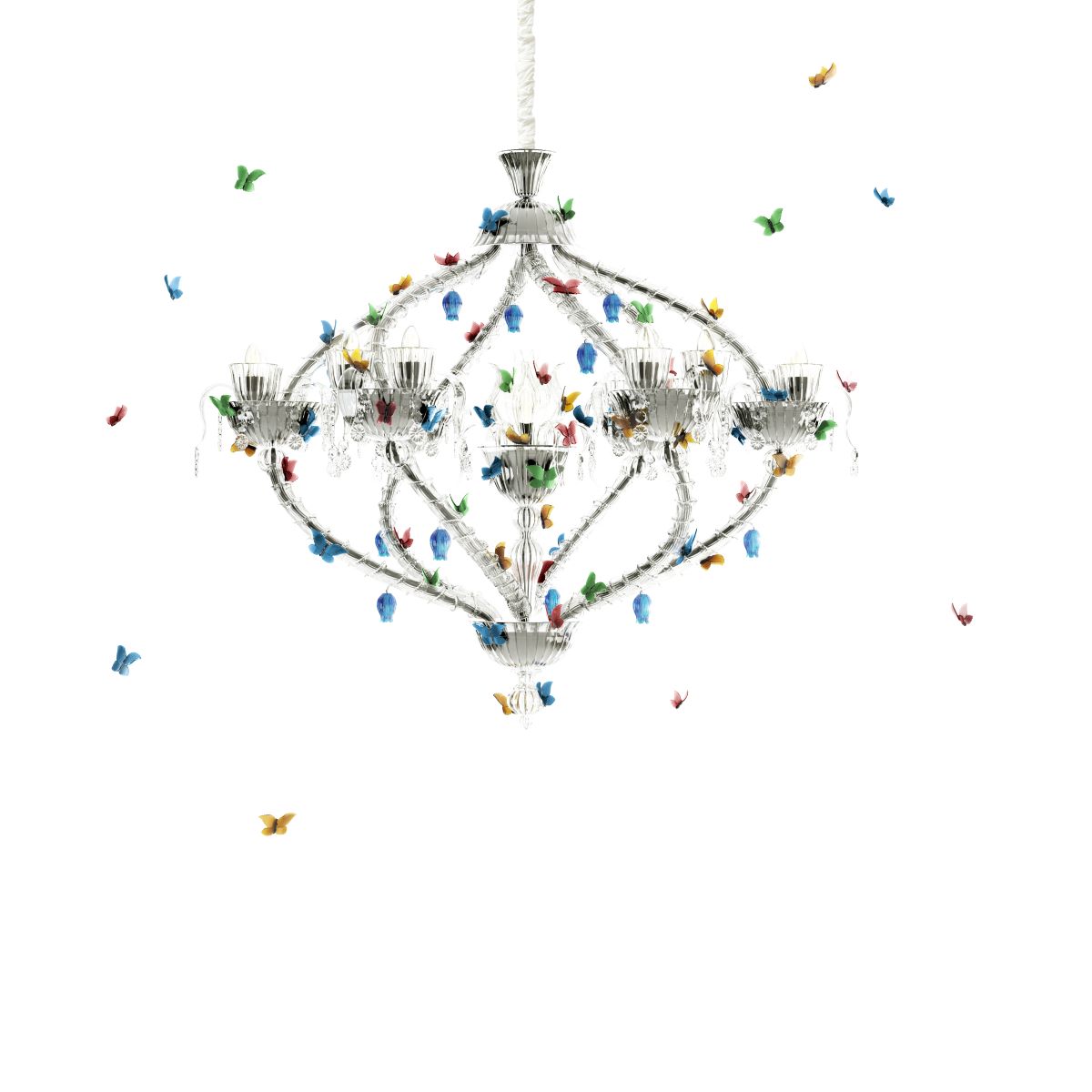At Salone del Mobile 2019, in the context of Euroluce, Barovier&Toso is ready to play a leading role thanks to its collaboration with Marcel Wanders, who created Adonis, a new collection of chandeliers which will be presented during Milan Design Week.
The Dutch studio, which has been working with Barovier&Toso for years, has focused on an exceptional mixture of elements: on the one hand, the classic motifs of the Venetian glassmaking tradition, and on the other the introduction of original forms derived from the philosophy and stylistic language of Marcel Wanders.
Featuring two models, the Adonis collection suggests the Dutch flower par excellence, the tulip: the closed, enveloping and secretive form of its petals has inspired an eclectic, fascinating design that gives rise to a luminous spindle in the space.

The arms of Adonis open to allow the light to emerge, and then turn back in an unusual way towards the top, closing at the centre with a spiral movement; sophisticated and intriguing, this play of sinuous lines and lights is emphasised by the presence of elegant ornaments, like the soft leaves that descend from the lateral crystal cups and richly adorn the central part of the chandelier.
Alongside the flowers and leaves typical of the Venetian tradition, Marcel Wanders introduces delicate butterflies and small tulip buds, producing a vision typical of the Dutch Golden Age, full of representation of botanical figures, flowers, as well as insects.

These parts resting lightly on the arms of the chandelier add dynamism and colour to the composition; conceptually envisioned in blue, like the Adonis Blue butterfly species, the butterflies and tulips are also available in other colours.
In addition, Adonis is perfect for personalisation, in both residential and hospitality settings, and it is possible to create captivating theatrical compositions, vertically combining the different modules.
Marcel Wanders says:
“The Dutch culture is rooted in enlightenment and creativity. We wanted this chandelier to both capture attention while at the same time reveal a nostalgic, romantic era of history.”


